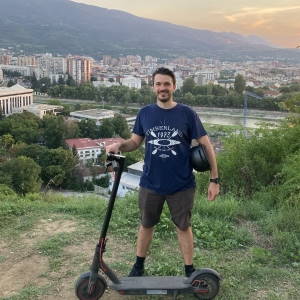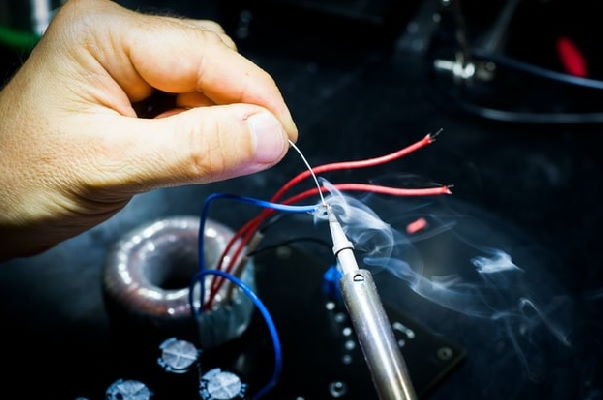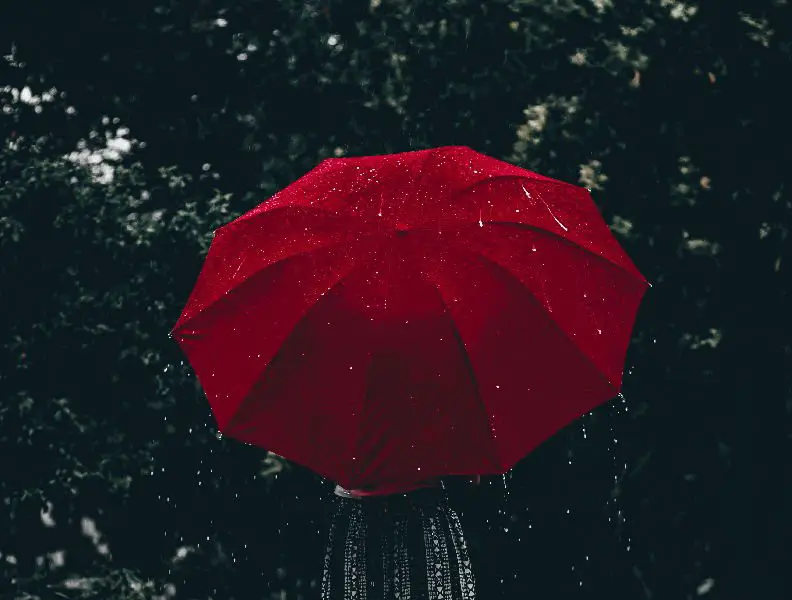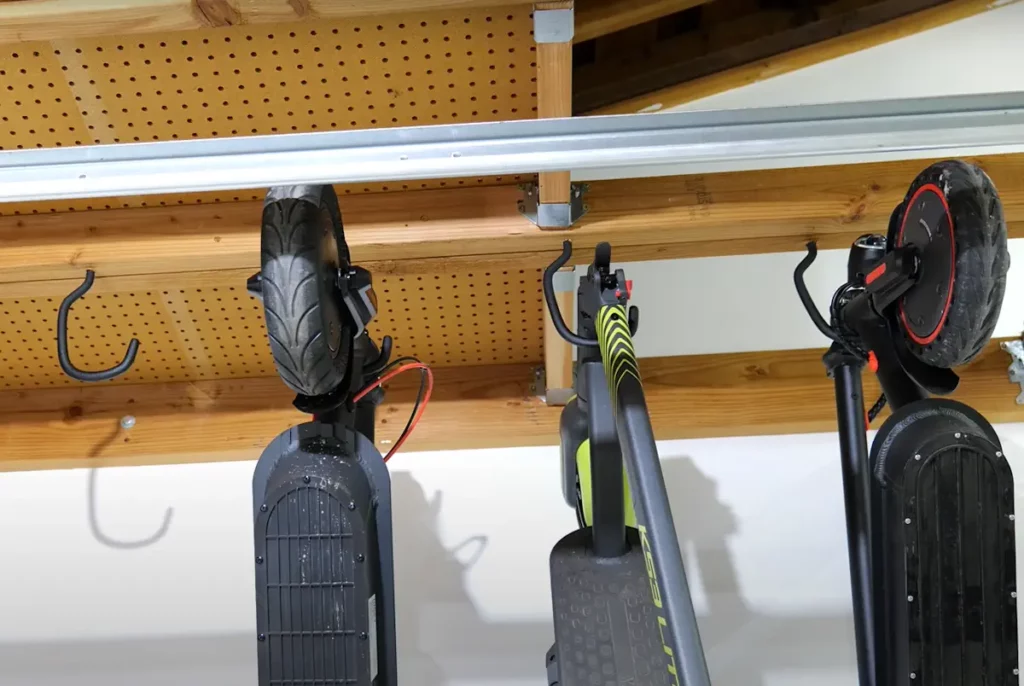Electric scooter cleaning as a part of your maintenance routine. It will not only help prolong the life of your scooter, but also you’ll notice potential defects sooner and react timely.
So, I’ve developed a simple, fast, yet very efficient routine for cleaning it. This is a complete checklist with all the steps on how to clean your electric scooter (it takes about 30-40 minutes to do a thorough job).
-
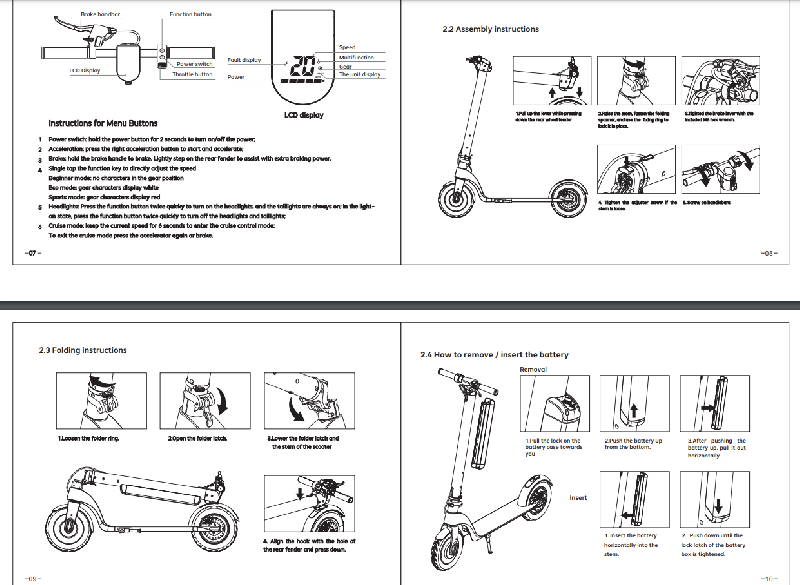 Check your manualDifficulty: easyTime needed: 3 minutesFollow the manufacturer’s cleaning instructions for your scooter.
Check your manualDifficulty: easyTime needed: 3 minutesFollow the manufacturer’s cleaning instructions for your scooter. -
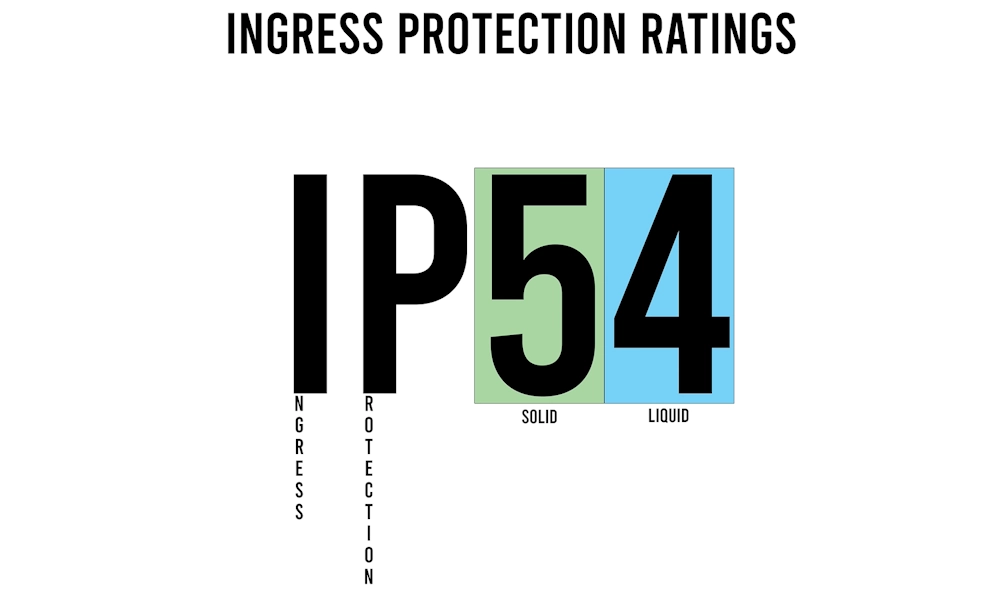 Check your scooter’s IP rating and materialsDifficulty: easyTime needed: 5 secondsThe IP rating presented as a two-digit value like “IP53” or “IP67,” with the second digit focusing on liquid resistance, particularly water.
Check your scooter’s IP rating and materialsDifficulty: easyTime needed: 5 secondsThe IP rating presented as a two-digit value like “IP53” or “IP67,” with the second digit focusing on liquid resistance, particularly water. -
 Turn off your scooterDifficulty: easyTime needed: 3 secondsEven though it’s common sense, check twice.
Turn off your scooterDifficulty: easyTime needed: 3 secondsEven though it’s common sense, check twice. -
 Make sure the motor and the battery are cooled downDifficulty: easyTime needed: 1-10 minutesHeat may lead to water evaporation and potential inner parts’ entrapment, which can result in corrosion.
Make sure the motor and the battery are cooled downDifficulty: easyTime needed: 1-10 minutesHeat may lead to water evaporation and potential inner parts’ entrapment, which can result in corrosion. -
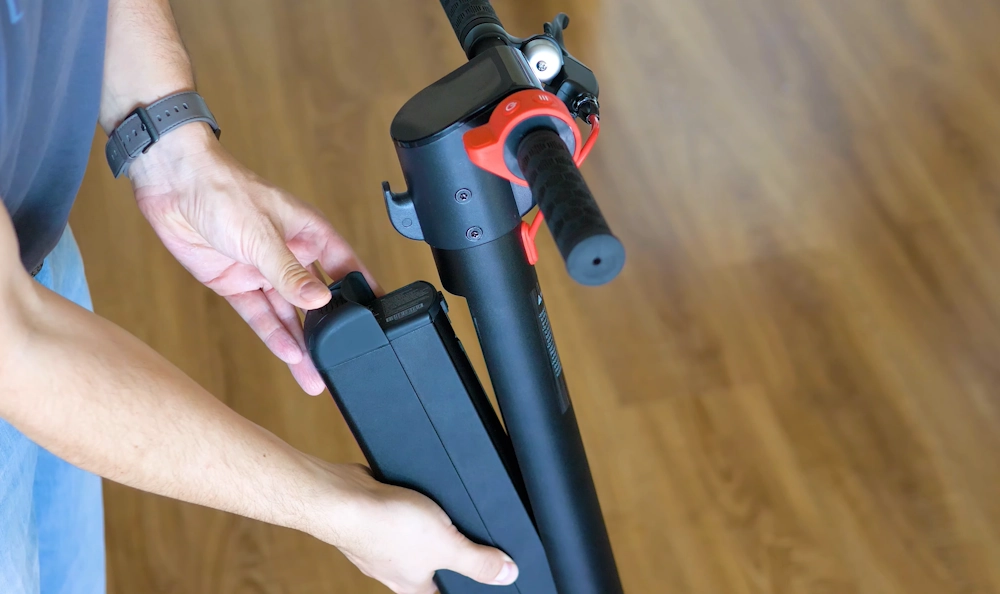 Remove the battery, if possibleDifficulty: easyTime needed: 3-5 minutesFor scooters with removable batteries, use a dry cloth without water, and reinsert the battery only after ensuring the scooter is completely dry
Remove the battery, if possibleDifficulty: easyTime needed: 3-5 minutesFor scooters with removable batteries, use a dry cloth without water, and reinsert the battery only after ensuring the scooter is completely dry -
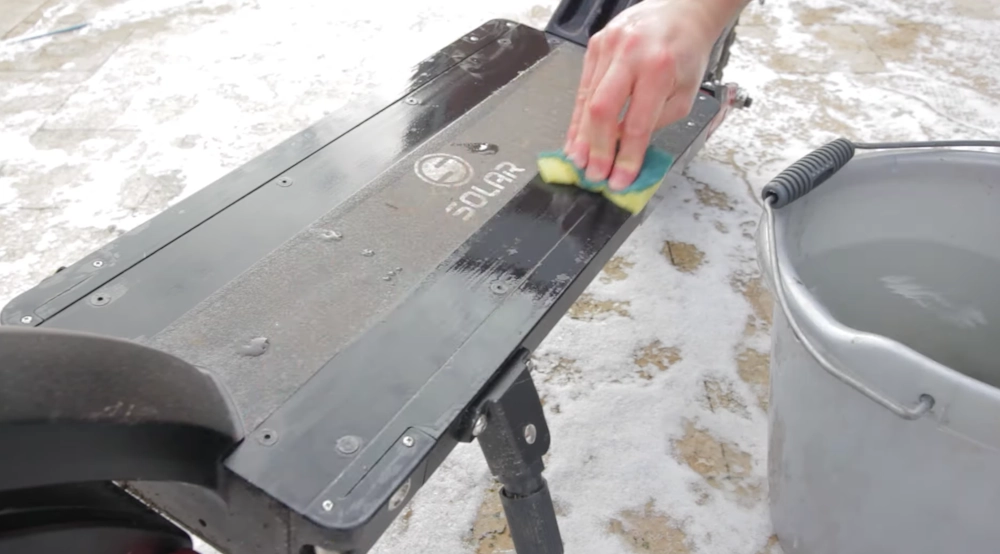 Start gently and gradually increase your effort as necessaryDifficulty: easyTime needed: 5-10 minStart cleaning your scooter gently and avoid using excessive force to prevent scratching or damaging its surface, which can be costly and permanent.
Start gently and gradually increase your effort as necessaryDifficulty: easyTime needed: 5-10 minStart cleaning your scooter gently and avoid using excessive force to prevent scratching or damaging its surface, which can be costly and permanent. -
 Clean the screen and controlsDifficulty: easyTime needed: 1 minuteUse a dry microfiber cloth, and if needed, a lightly moistened cloth with distilled water or a screen cleaning solution while avoiding excessive pressure to prevent scratching or damage.
Clean the screen and controlsDifficulty: easyTime needed: 1 minuteUse a dry microfiber cloth, and if needed, a lightly moistened cloth with distilled water or a screen cleaning solution while avoiding excessive pressure to prevent scratching or damage. -
 Clean the small parts(cables, screws, springs, and calipers)Difficulty: easyTime needed: 5 minutesUse an old toothbrush.
Clean the small parts(cables, screws, springs, and calipers)Difficulty: easyTime needed: 5 minutesUse an old toothbrush. -
 Clean the metal partsDifficulty: easyTime needed: 3 minutesUse a traditional method of scrubbing with a soft sponge or dishcloth soaked in soapy water, repeat the process to ensure a thorough result.
Clean the metal partsDifficulty: easyTime needed: 3 minutesUse a traditional method of scrubbing with a soft sponge or dishcloth soaked in soapy water, repeat the process to ensure a thorough result. -
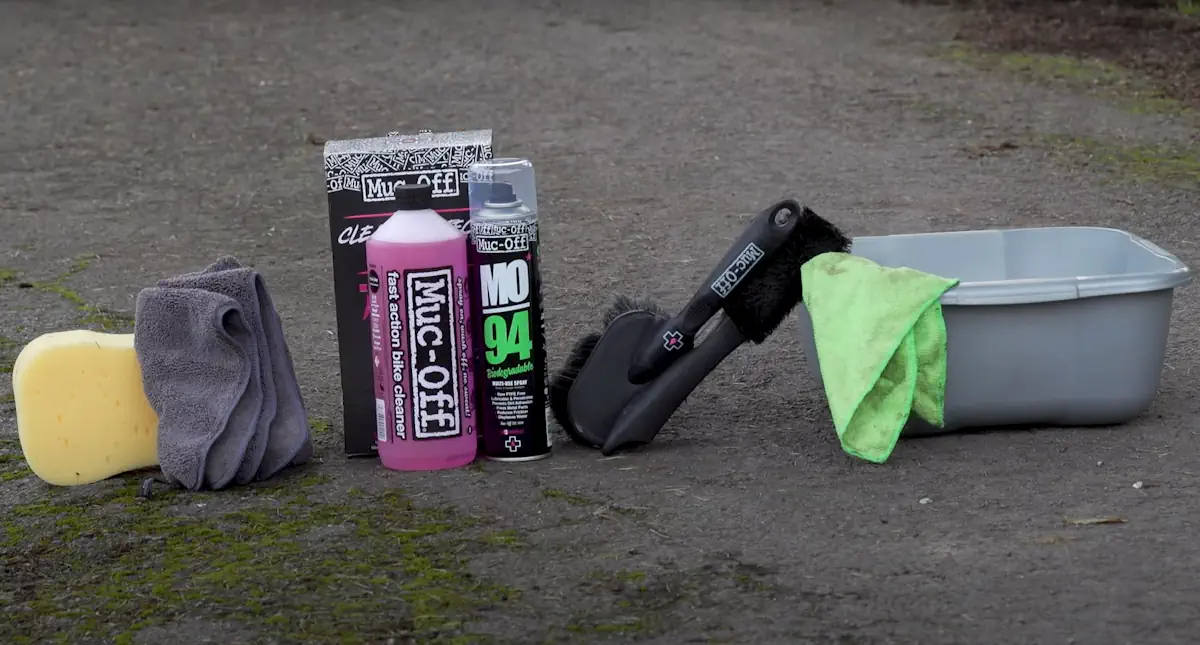 Clean the plastic, silicone, rubber, and carbon fiber partsDifficulty: easyTime needed: 3 minutesAvoid acidic cleaners, which can be used more liberally for non-metallic components, and for stubborn stains, prepare a cleaning paste with added baking soda.
Clean the plastic, silicone, rubber, and carbon fiber partsDifficulty: easyTime needed: 3 minutesAvoid acidic cleaners, which can be used more liberally for non-metallic components, and for stubborn stains, prepare a cleaning paste with added baking soda. -
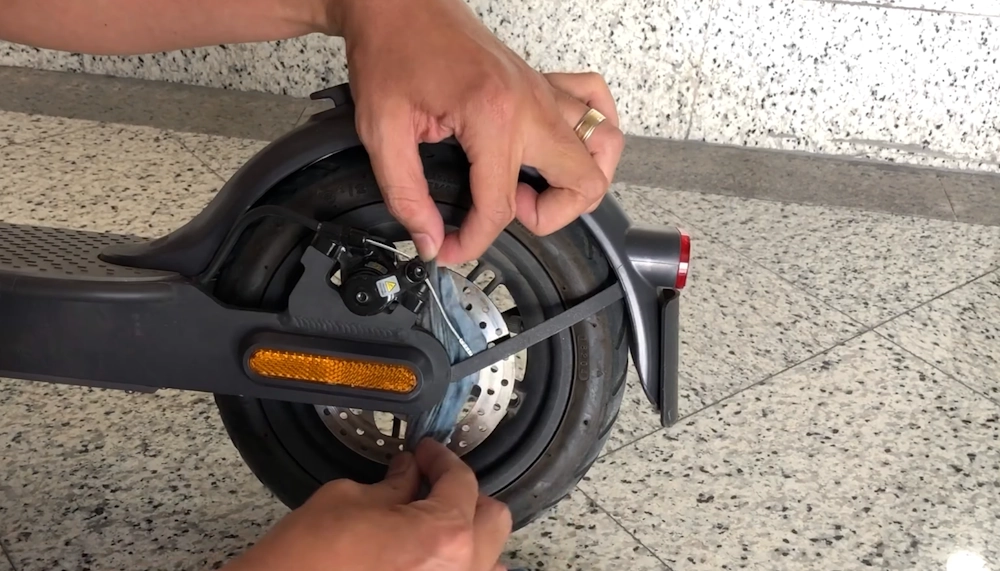 Clean the wheelsDifficulty: moderateTime needed: 7-8 minutesManually remove visible debris, then scrub the tires with a large cloth or sturdy wheel brush, using soapy water or a stronger cleaning solution.
Clean the wheelsDifficulty: moderateTime needed: 7-8 minutesManually remove visible debris, then scrub the tires with a large cloth or sturdy wheel brush, using soapy water or a stronger cleaning solution. -
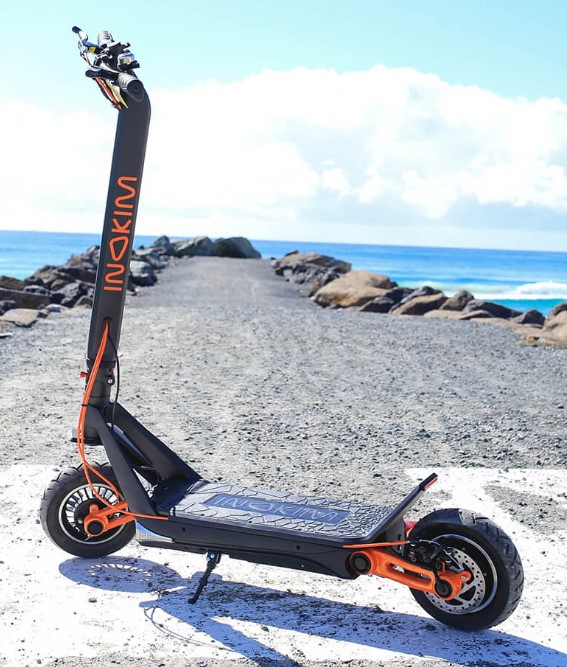 Remove grease, stains, or hardened patches of dirtDifficulty: moderateTime needed: 3-5 minutesApply toothpaste to the affected area, gently scrub with a toothbrush, and wipe clean with a damp cloth.
Remove grease, stains, or hardened patches of dirtDifficulty: moderateTime needed: 3-5 minutesApply toothpaste to the affected area, gently scrub with a toothbrush, and wipe clean with a damp cloth. -
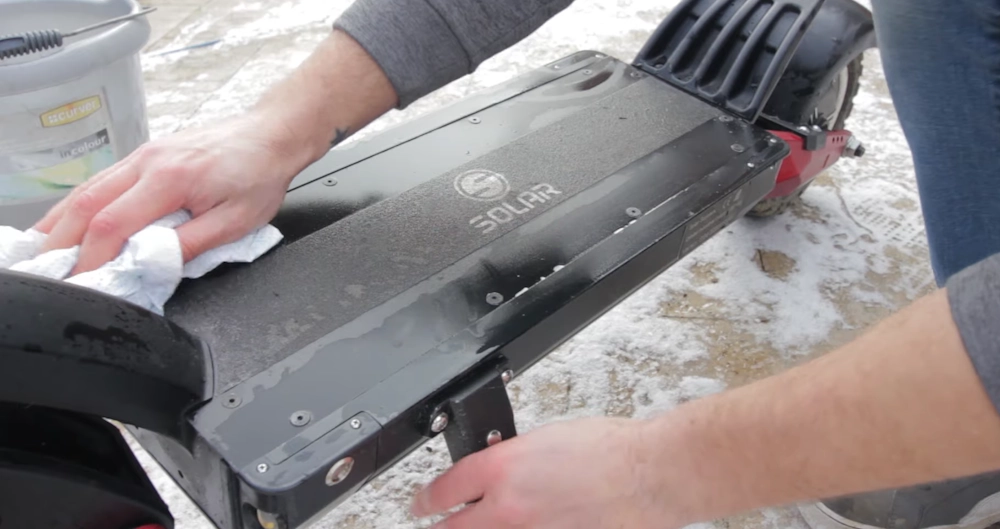 Rinse off the waterDifficulty: easyTime needed: 2 minutesUse a dry cloth to thoroughly remove any remaining water from your scooter’s surface, taking care not to direct it toward the battery, lights, or electronic components.
Rinse off the waterDifficulty: easyTime needed: 2 minutesUse a dry cloth to thoroughly remove any remaining water from your scooter’s surface, taking care not to direct it toward the battery, lights, or electronic components. -
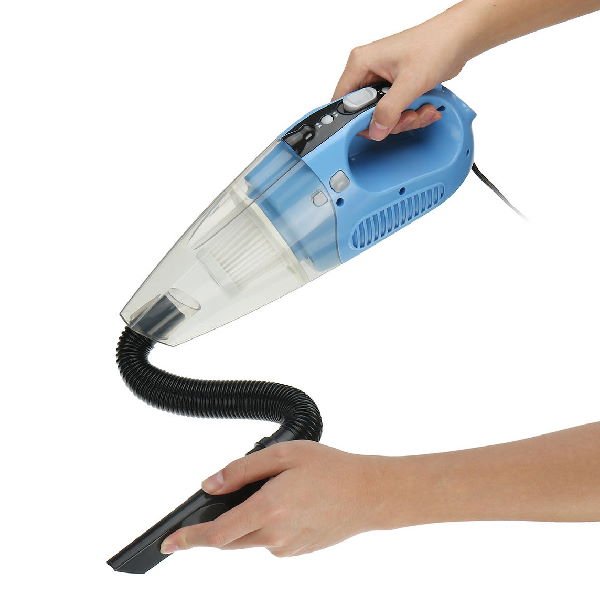 Dry off your scooter with a wet-dry vacuum cleanerDifficulty: easyTime needed: 5 minutesGently vacum around holes, joints, screws, and contact points, ensuring a thorough drying process.
Dry off your scooter with a wet-dry vacuum cleanerDifficulty: easyTime needed: 5 minutesGently vacum around holes, joints, screws, and contact points, ensuring a thorough drying process. -
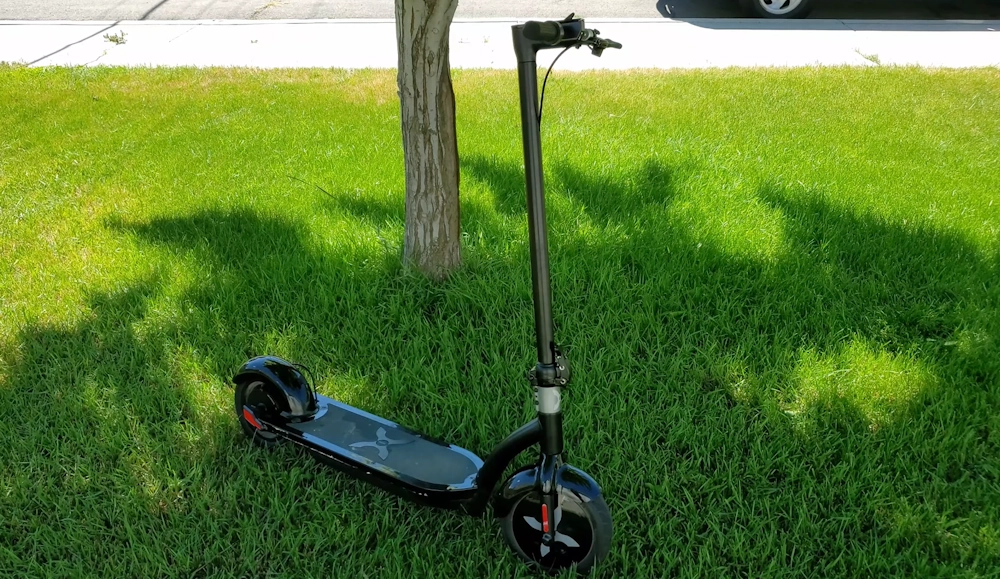 Let your scooter dry offDifficulty: easyTime needed: 10-15 minutesLet your scooter air dry for at least an hour, or longer in humid conditions.
Let your scooter dry offDifficulty: easyTime needed: 10-15 minutesLet your scooter air dry for at least an hour, or longer in humid conditions.
Let’s see how to move through the steps quickly and efficiently, but also how to avoid doing damage, since that can easily happen if you’re not careful.
Step-by-step checklist for cleaning your scooter quickly
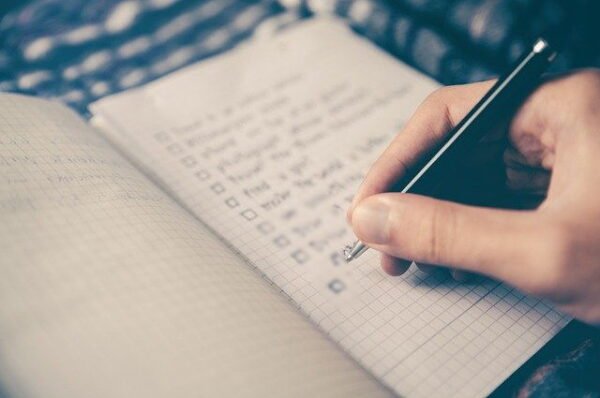
If you clean your electric scooter regularly, this entire process will take you less than 20 minutes. If you skip it a few times, your scooter will be dirtier and you’ll have to devote more time to clean it.
The steps are in a logical order. Let’s go over them.
Check your manual for specific cleaning instructions
The manufacturer’s recommended instructions for cleaning your specific scooter are invaluable – they know it best.
However, some manuals lack these essential instructions, which isn’t a good sign. If a company can’t produce a decent manual, it raises questions about the quality of their scooters.
Thankfully, these instances are rare, and reputable brands typically provide comprehensive manuals.
If your scooter’s manual includes cleaning instructions, follow those above everything else.
Know your scooter, its IP rating, and its materials

Related to the point above, you should be familiar with the basics of your scooter.
When it comes to cleaning, the most important things you need to know about your scooter are its IP rating and the materials used in its production.
IP rating
The IP rating indicates a scooter’s resistance to external particles, often presented as a two-digit value like “IP53” or “IP67,” with the second digit focusing on liquid resistance, particularly water.
Understanding the IP rating helps you decide how to clean your scooter. If you’re unfamiliar with this system, refer to the waterproof electric scooter guide.
In cases where scooters lack an IP rating, assume they aren’t water-resistant and handle cleaning with care.
Avoid using water hoses or high-pressure spray guns, even for scooters with a strong IP rating, as exposing electric components to strong water jets can be problematic, although many people still do it.
Materials
By knowing what materials your scooter is made of, you will be able to take better care of it and clean it more safely and thoroughly. Not all materials should be cleaned in the same way.
If you are careless, you can easily damage your scooter permanently.
Turn off your scooter

It’s common sense, but don’t forget it. We will be using water, so it’s best if your scooter is powered down.
Make sure the motor and the battery are cooled down
As a precaution, make sure your scooter isn’t overheated. If you’ve recently ridden the scooter or it’s been exposed to sunlight, wait a few minutes.
Heat may lead to water evaporation and potential inner parts’ entrapment, which can result in corrosion. For this reason, it’s advisable not to clean your e-scooter in direct sunlight.
Remove the battery if possible, and other removable parts, and clean them separately

Certain electric scooters feature removable batteries, with options for the main battery, supporting an additional removable battery, or both.
In such cases, it’s wise to detach the battery and clean it separately. This offers a dual advantage:
- cleaning the battery itself – potentially improving its performance
- preventing battery damage while cleaning the rest of your scooter.
To clean the battery, use a dry cloth to wipe away dust – avoid using water. Only reinstall the battery after ensuring your scooter is completely dry.
Apply the same approach for any other removable parts. For instance, if your scooter has a removable seat or added accessories, remove and clean them separately.
Start gently and gradually increase your effort as necessary

Many scooter stains and dirt can be removed with gentle scrubbing.
Increasing the intensity of scrubbing or using stronger tools, such as sandpaper, carries the risk of scratching your scooter’s surface. These scratches can be costly to repair and may even be permanent.
Begin with less abrasive cleaning methods, utilizing gentle uni-directional motions. Avoid circular movements, as they are both ineffective and riskier.
Only increase pressure if stains and dirt persist despite your initial efforts.
Remove large debris
It’s a good idea to begin by manually clearing away any debris that can be removed by hand.
Items like debris, glass, grass, or wood often become lodged in your scooter’s wheels, wheel wells, or any other accessible areas.
Clearing these obstructions first is a systematic approach that simplifies the rest of the cleaning process.
Move from the top down
To demonstrate the importance of this principle, consider this scenario: if you start by cleaning your deck first and then proceed to wash the stem with soapy water, the soap drips down onto the deck. As a result, you’ll have to clean the deck again.
By working from the top down, you make sure that each section is cleaned only once.
Clean the screen and the controls
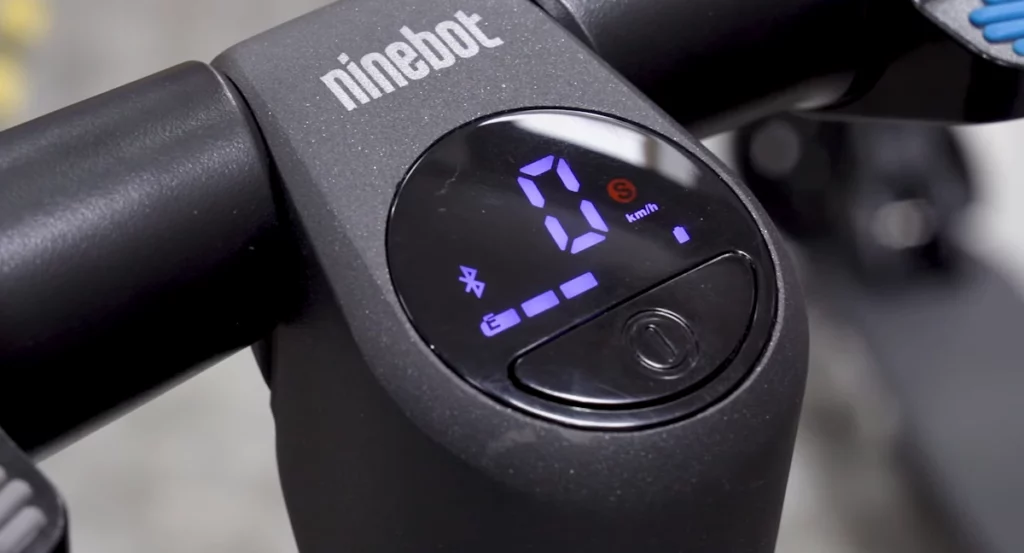
The screen and controls of your electric scooter are highly sensitive electronic components, so be cautious with water use.
Start by cleaning them with a dry microfiber cloth.
If stains persist, lightly moisten the cloth with distilled water or a screen cleaning solution, ensuring no water is left behind.
Avoid applying excessive pressure to the screen to prevent potential scratching or damage.
Clean the small parts
The small parts of your scooter will include:
- buttons
- levers
- handlebars
- wires
- cables
- lights, reflectors, stickers, LED strips
- calipers
- screws
- springs
- holes
Clean them by brushing them with an old toothbrush. If they have some stains or dirt that is hard to remove, use soap or toothpaste.
Clean the metal parts

Your electric scooter is typically made mostly of aluminum alloy, with occasional stainless steel or other metal components.
To clean metals effectively, use the traditional method of scrubbing with a soft sponge or dishcloth soaked in soapy water.
Use two buckets: one with soapy water and the other with clean water, and follow these steps:
- Dip the sponge in soapy water, squeezing it nearly dry.
- Gently scrub metal parts in long, one-direction motions, covering small areas.
- Rinse the sponge in the clean water bucket and dry it.
- Repeat steps 1 to 3 until your scooter is satisfactorily clean.
Follow the “wash, rinse, repeat” approach to ensure a thorough cleaning.
Clean the plastic, silicone, rubber, and carbon fiber parts
You can clean parts made from plastic, silicone, rubber, or carbon fiber just like metal components.
However, there’s one key difference: avoid acidic cleaners.
While you can occasionally use lemon juice or vinegar for metal, be careful. Metals can corrode from acids, so rinse them promptly. Acidic cleaners are generally not recommended for metals.
For non-metallic parts, you can use lemon juice or vinegar more generously to tackle tough stains or hardened dirt patches.
To tackle the toughest stains, prepare a cleaning paste with added baking soda.
Clean the wheels

Cleaning the wheels may be the most challenging step.
Start by manually removing any visible debris.
Next, scrub the tires with a large cloth or a sturdy wheel brush, using soapy water or a stronger cleaning solution.
For thorough cleaning, elevate your scooter to spin the wheels. Turn them and clean different sections using the cloth or brush.
Clean grease, stains, or hardened patches of dirt
To tackle grease, stains, or stubborn dirt, use toothpaste in addition to a damp sponge with soapy water.
Apply toothpaste to the affected area, gently brush it with a toothbrush, and wipe it away using a damp cloth.
Remember not to leave toothpaste on for an extended period to avoid potential oxidation or damage to metal parts. Thoroughly wipe it off.
Rinse off the water

Make sure to use a dry cloth to rinse off any water that has remained on the surface of your scooter.
Be careful not to push the water in the direction of the battery, the lights, or other electronic parts.
Also, don’t push it anywhere near the holes, if it gets stuck in there it may cause oxidation and corrosion later.
Dry off your scooter with a wet-dry vacuum cleaner

If you have a wet-dry vacuum cleaner, use it to dry your scooter. Just be cautious not to scratch the scooter with the plastic nozzle.
Gently vacuum around the holes, joints, screws, and contact points to remove all lingering water.
Remember to use a wet-dry vacuum cleaner, as regular ones are not suitable for water cleanup.
Let your scooter dry off

Lastly, allow your scooter to air dry for a minimum of an hour, longer if you’re in a humid area.
If you removed the battery initially, reinsert it only after the scooter is entirely dry. Also, reattach any other removable parts and accessories.
Advanced tips for thoroughly cleaning your electric scooter
About once a month, I like to do a detailed job of cleaning my scooter. This will include the regular routine described above, but with a few extra steps.
Use lemon juice or vinegar with baking soda for hard stains and for polishing
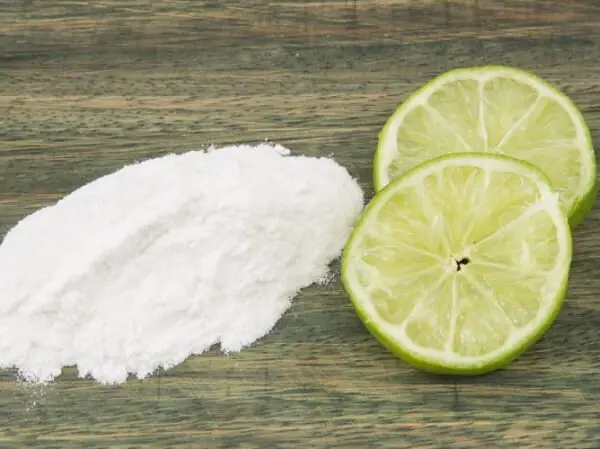
Be careful when using this method, as its suitability depends on your scooter’s materials. If you’re uncertain, consider skipping this step.
I previously mentioned the effectiveness of a lemon juice and baking soda paste for cleaning non-metallic parts.
Interestingly, it can also be used on metal surfaces, but it’s crucial to promptly and thoroughly remove the paste. Acidic solutions like vinegar and lemon juice can lead to rust when left in contact with metals for an extended period.
Therefore, proceed with care and remove the paste quickly.
Polish your scooter
I polish plastic parts by gently rubbing them with a fine cloth and toothpaste.
For the aluminum components, I apply aluminum polish to the surface, rub gently in circular motions, and then remove it with a clean, soft cloth.
If desired, I use another clean, soft cloth to give my scooter an extra-shiny finish by gently polishing it in circular movements.
What you should never do when cleaning your scooter?
These are all the things you should never do when cleaning your scooter.
Don’t rub too hard
No matter how hard the stain looks, resist the temptation to dig in. This will frequently result in scratches.
Instead, give it some more time and some more gentle scrubbing. Use toothpaste, lemon juice, and baking soda paste, to remove harder stains.
Don’t hose your scooter, and don’t use high-pressure water spray guns
Technically, it’s possible, and some people attempt it.
However, it’s generally discouraged, especially for scooters without a strong IP rating.
Only models with a second digit in their IP rating of 6 or higher can withstand high-pressure water jets without risking damage.
Don’t use blow dryers
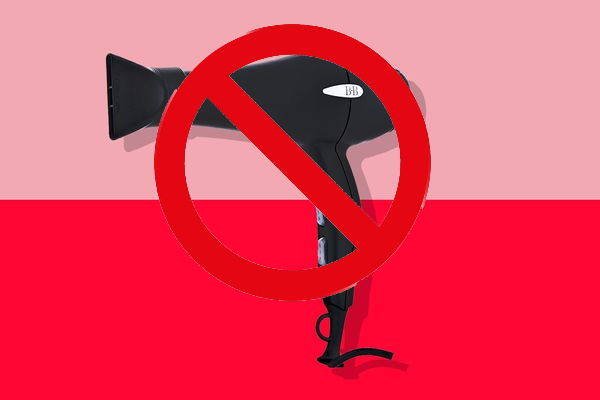
It may sound like a good idea to use a blow dryer to dry off your scooter after cleaning it.
But keep in mind, this can easily cause several bad things to happen:
- heat up the components, maybe even damage some electronics
- push water inside the scooter
- make the water steam and thus end up in the insides of the scooter
Just use a wet-dry vacuum cleaner instead.
How often should you clean your scooter?
You should clean your scooter either once a week, or as soon as it needs to get cleaned.
Naturally, if you don’t ride don’t scooter that much, you don’t need to clean it as often. It’s still a good idea to check up on it every once in a while, even if you don’t ride it at all.
